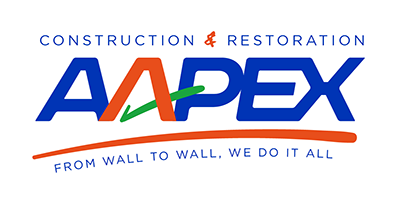A commercial roof is one of the single most important components of any commercial building. At an average cost of $3.50 to $7.50 per square foot, a commercial roof will also be one of a business’s most significant expenses. One important method for extending the life of a commercial roof is by performing periodic inspections to maintain the roof and get ahead of any repairs that may need to be done. Commercial roof inspections should be done at least annually. There are five main things you want to be sure to focus on during a commercial roof inspection.
Commercial Roof Gutters, Scuppers, and Drains
The drainage system for a commercial roof needs to be free of clogs in order to allow the roof to properly drain. If the gutters, scuppers, and drains are clogged with leaves, the roof will be unable to properly drain. In a flat commercial roof, a clogged drainage system will lead to pooled water anytime it rains or snows, and pooled water on a flat roof inevitably leads to leaks and very costly damage. Once you’ve checked the gutters, scuppers, and drains for debris, check the seals around each. Cracks in these seals will allow water to go around, rather than through, these drains, leading to leaks in your roof. Finally, examine the strainers or screens associated with these drainage components, checking to ensure they have not worn away, allowing debris to find its way into your building’s drainage system.
Commercial Rooftop Units and Penetrations
Commercial rooftop units typically include the HVAC systems for the building. These will need to be inspected to ensure any condensation that may be collecting on them is properly draining through the roof’s drainage system. Rooftop penetrations include hatches, stacks, vents, HVAC equipment penetrations, and skylights, if present. The seals around each of these will need to be inspected for cracks that may allow water to seep into the building. Rain caps on stacks will need to be examined to ensure they are not allowing precipitation into the stacks. Finally, the seals and rooftop around these penetrations and units will need to be inspected for any bubbling or cracking that may indicate wear.
Commercial Roof Surface
Possibly the simplest aspect of a commercial roof inspection, but equally important, is scanning the entire surface for any sign of wear, which may include bubbling or cracking. The materials used in a commercial roof are designed to be flexible enough to withstand the stress of expanding and contracting caused by changes in the weather throughout the year. But as a roof ages, this elasticity lessens and bubbles often appear. These sections need to be repaired in order to prevent further damage and protect your building from water intrusion.
Commercial Roof Edges, Flashings, Terminations, and Expansion Joints
These are often the most vulnerable elements of a commercial roof and will often see the first wear. Walking around the edge of your roof, keep an eye out for any cracks or splits, especially at the terminations and edges. Check expansion joints for cracks or other defects that will allow water to leak into your building. Examine the roof flashing to ensure it is not rusting or otherwise damaged. Finally, check the masonry walls, if any are present, for deterioration.
Commercial Roof Defects
Finally, a thorough commercial roof inspection will look for general defects throughout the roof – holes, cracks, bubbles, or soft areas in the decking. Each of these will need to be repaired in order for your commercial roof to function properly. By having these areas patched by a trusted commercial roofing contractor, like Aapex Construction & Restoration, you can add years to the longevity of your roof.
Is your commercial roof in need of an inspection or repair? Contact us today to protect the investment you’ve made in your business.


